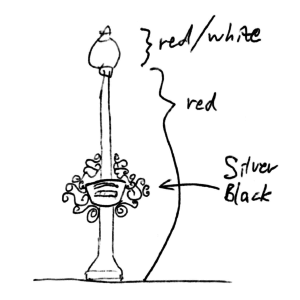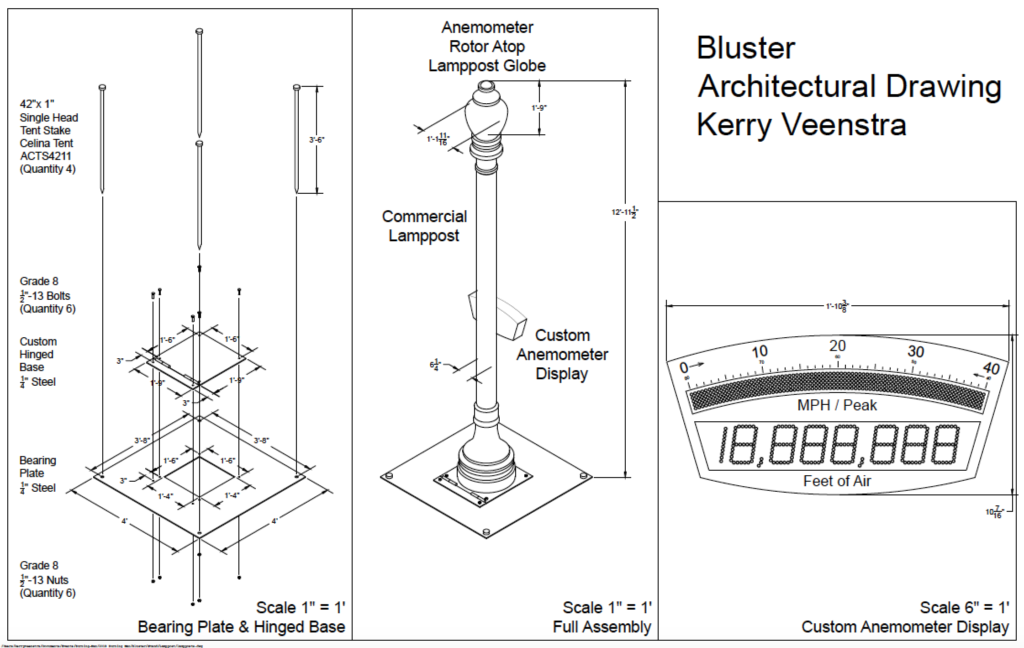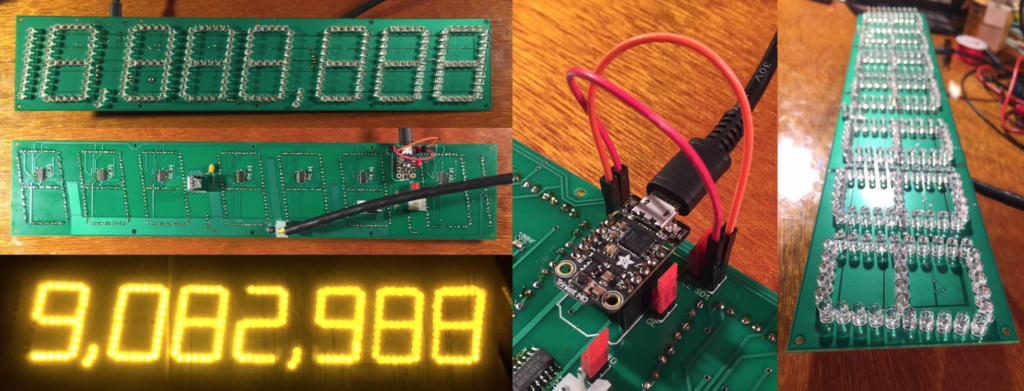 At Burning Man some participants bluster that they experience 60 to 70 MPH winds every day. “Bluster” is an anemometer constructed from a 13-foot commercial lamppost. The piece has an illuminated bargraph that shows the current wind speed and the peak wind speed. In addition, Bluster’s night beacon pulses slowly in a slow wind and more quickly in a fast wind helping participants perceive the variation of wind gusts from afar. For extra fun, the anemometer also displays the total number of feet of air that have blown past. (That is, the length of the column of passing air, in feet.) After reviewing historical weather data, I expect that by the week’s end this column of air will be around 5,000,000 feet long.
At Burning Man some participants bluster that they experience 60 to 70 MPH winds every day. “Bluster” is an anemometer constructed from a 13-foot commercial lamppost. The piece has an illuminated bargraph that shows the current wind speed and the peak wind speed. In addition, Bluster’s night beacon pulses slowly in a slow wind and more quickly in a fast wind helping participants perceive the variation of wind gusts from afar. For extra fun, the anemometer also displays the total number of feet of air that have blown past. (That is, the length of the column of passing air, in feet.) After reviewing historical weather data, I expect that by the week’s end this column of air will be around 5,000,000 feet long.
The piece’s primary color is red: the lamppost and the LEDs of the digital anemometer display both are red. The nighttime beacon pulses white/red with the speed of the wind. The display’s enclosure is silver metallic, and the wind-inspired scrollwork around the display is black.

Progress
Earlier this year I put the Dusty Diner on hold because its front-loading trike, which had been ordered in 2017, had not yet arrived, and I started Bluster instead. Major parts of Bluster are done:
Drawings: I’ve completed the architectural drawings, installation plan, and deinstallation plan for the project. The wind-load calculations are ready.

Lamppost: The 11-foot cast-aluminum lamppost arrived quickly from King Architectural Metals, along with its globe.

Paint: The primary color of the lamppost is Viper Red, the enclosure for the wind-speed display is Silver Metallic, and the wind-inspired scrollwork that surrounds the enclosure is Viper Black. I’ve ordered aerosol cans of the automotive primer and paints from 66 Auto Color.



Scrolls: I already have samples of premade scrolls that remind me of wind vortices. Some or all of scrolls like these will decorate the display’s enclosure.

Printed-Circuit Boards: The “totalizer” display is designed, fabricated, soldered, and programmed, although I soldered it before deciding to use red LEDs. So I’ll assemble the second totalizer PCB using red LEDs and keep the amber display as a backup.

The bargraph PCB is designed and fabricated, and its red LEDs are on their way. The anemometer PCB is designed, fabricated, and soldered. The sensor PCB is designed, fabricated, and soldered.

I already have the 1/4″-steel bearing plate from another project.
What’s Left
The checklist for completion is manageable:
- Prime and paint the lamppost
- Solder and program the bargraph PCB
- Program the anemometer PCB
- Construct, prime, and paint the display enclosure
- Fabricate the hinged base
- Design, fabricate, prime, and paint the enclosure’s surrounding scrollwork
- Mount the anemometer electronics in the lamppost globe
- Build two 48-volt batteries
- Wire everything
With this progress, I’ve submitted a Burning Man Art Installation Questionnaire.